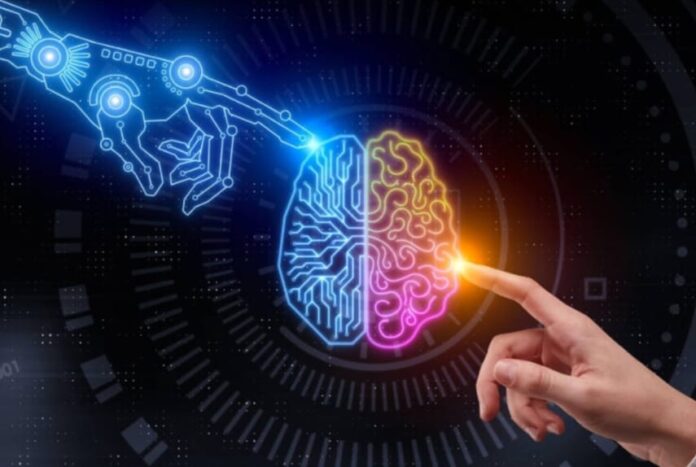Forms of Artificial Intelligence:
1) Weak AI:
- Weak AI is an AI that is created to solve a particular problem or perform a specific task.
- It is not a general AI and is only used for specific purpose.
- For example, the AI that was used to beat the chess grandmaster is a weak AI as that serves only 1 purpose but it can do it efficiently.
2) Strong AI:
- Strong AI is difficult to create than weak AI.
- It is a general-purpose intelligence that can demonstrate human abilities.
- Human abilities such as learning from experience, reasoning, etc. can be demonstrated by this AI.
3) Super Intelligence:
- As stated by a leading AI thinker Nick Bostrom, “Super Intelligence is an AI that is much smarter than the best human brains in practically every field”.
- It ranges from a machine being just smarter than a human to a machine being trillion times smarter than a human.
- Super Intelligence is the ultimate power of AI.
An AI system is composed of an agent and its environment. An agent (e.g., human or robot) is anything that can perceive its environment through sensors and acts upon that environment through effectors. Intelligent agents must be able to set goals and achieve them. In classical planning problems, the agent can assume that it is the only system acting in the world, allowing the agent to be certain of the consequences of its actions. However, if the agent is not the only actor, then it requires that the agent can reason under uncertainty. This calls for an agent that cannot only assess its environment and make predictions but also evaluate its predictions and adapt based on its assessment. Natural language processing gives machines the ability to read and understand human language. Some straightforward applications of natural language processing include information retrieval, text mining, question answering, and machine translation. Machine perception is the ability to use input from sensors (such as cameras, microphones, sensors, etc.) to deduce aspects of the world. e.g., Computer Vision. Concepts such as game theory, and decision theory, necessitate that an agent can detect and model human emotions.
Machine learning, a fundamental concept of AI research since the field’s inception, is the study of computer algorithms that improve automatically through experience. The mathematical analysis of machine learning algorithms and their performance is a branch of theoretical computer science known as a computational learning theory.
Stuart Shapiro divides AI research into three approaches, which he calls computational psychology, computational philosophy, and computer science. Computational psychology is used to make computer programs that mimic human behaviour. Computational philosophy is used to develop an adaptive, free-flowing computer mind. Implementing computer science serves the goal of creating computers that can perform tasks that only people could previously accomplish.
AI has developed a large number of tools to solve the most difficult problems in computer science, like:
- Search and optimization
- Logic
- Probabilistic methods for uncertain reasoning
- Classifiers and statistical learning methods
- Neural networks
- Control theory
- Languages
High-profile examples of AI include autonomous vehicles (such as drones and self-driving cars), medical diagnosis, creating art (such as poetry), proving mathematical theorems, playing games (such as Chess or Go), search engines (such as Google search), virtual assistants (such as Siri), image recognition in photographs, spam filtering, prediction of judicial decisions [204] and targeted online advertisements. Other applications include Healthcare, Automotive, Finance, Video games, etc
Are there limits to how intelligent machines – or human-machine hybrids – can be? A superintelligence, hyperintelligence, or superhuman intelligence is a hypothetical agent that would possess intelligence far surpassing that of the brightest and most gifted human mind. ‘‘Superintelligence’’ may also refer to the form or degree of intelligence possessed by such an agent.
Technologies Based on Artificial Intelligence:
- Machine Learning: A subfield of AI that uses algorithms to enable systems to learn from data and make predictions or decisions without being explicitly programmed.
- Natural Language Processing (NLP): A branch of AI that focuses on enabling computers to understand, interpret, and generate human language.
- Computer Vision: A field of AI that deals with the processing and analysis of visual information using computer algorithms.
- Robotics: AI-powered robots and automation systems that can perform tasks in manufacturing, healthcare, retail, and other industries.
- Neural Networks: A type of machine learning algorithm modelled after the structure and function of the human brain.
- Expert Systems: AI systems that mimic the decision-making ability of a human expert in a specific field.
- Chatbots: AI-powered virtual assistants that can interact with users through text-based or voice-based interfaces.
Drawbacks of Artificial Intelligence:
Artificial Intelligence has the potential to bring many benefits to society, but it also raises some important issues that need to be addressed, including:
- Bias and Discrimination: AI systems can perpetuate and amplify human biases, leading to discriminatory outcomes.
- Job Displacement: AI may automate jobs, leading to job loss and unemployment.
- Lack of Transparency: AI systems can be difficult to understand and interpret, making it challenging to identify and address bias and errors.
- Privacy Concerns: AI can collect and process vast amounts of personal data, leading to privacy concerns and the potential for abuse.
- Security Risks: AI systems can be vulnerable to cyber-attacks, making it important to ensure the security of AI systems.
- Ethical Considerations: AI raises important ethical questions, such as the acceptable use of autonomous weapons, the right to autonomous decision making, and the responsibility of AI systems for their actions.
- Regulation: There is a need for clear and effective regulation to ensure the responsible development and deployment of AI.

































